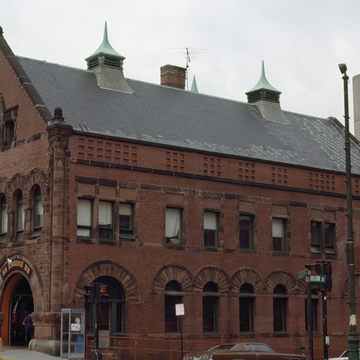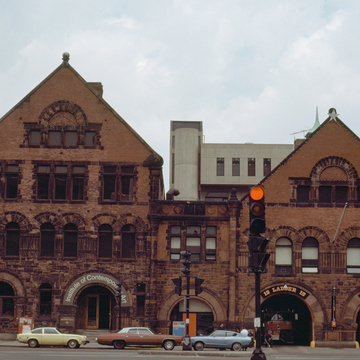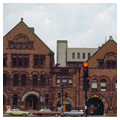You are here
Boston Architectural College (Institute of Contemporary Art) and Engine and Hose House No. 33
City Architect Arthur H. Vinal originally designed the two buildings as fire and police stations and stables. Romanesque in style, the firehouse underwent minor alterations but remains a fire station. The police station, although retaining much of its exterior, was completely rehabilitated to house the Institute of Contemporary Art (ICA), founded in 1936. Sensitively laid out, the totally modernized galleries are built around a staircase, descending to a café and ascending to additional gallery space. The interiors resemble the loft conversions characteristic of the 1970s. Needing more exhibition space, the ICA moved in 2007 to a new building designed by Diller, Scofidio + Renfro of New York in the South Boston Seaport district. The Boston Architectural College has purchased the old ICA building for expansion.
Writing Credits
If SAH Archipedia has been useful to you, please consider supporting it.
SAH Archipedia tells the story of the United States through its buildings, landscapes, and cities. This freely available resource empowers the public with authoritative knowledge that deepens their understanding and appreciation of the built environment. But the Society of Architectural Historians, which created SAH Archipedia with University of Virginia Press, needs your support to maintain the high-caliber research, writing, photography, cartography, editing, design, and programming that make SAH Archipedia a trusted online resource available to all who value the history of place, heritage tourism, and learning.
















